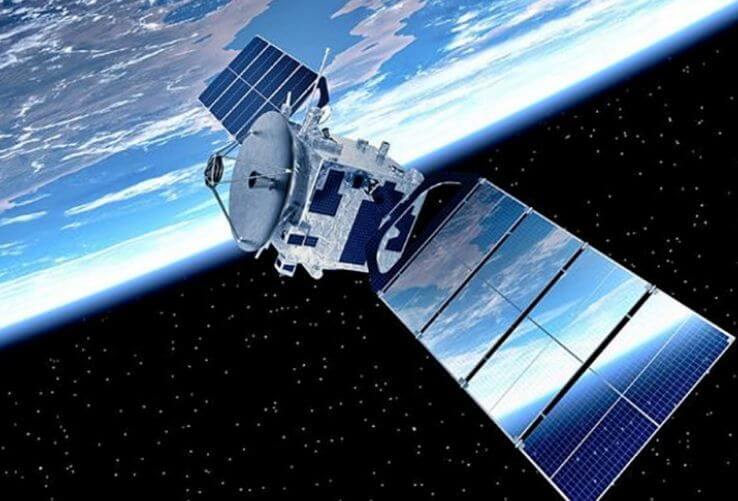By Mirza Abdul Aleem Baig
SpaceX’s Starlink, the satellite-based internet constellation, is rapidly expanding its global footprint, promising high-speed internet access in underserved regions.

While this technological advancement is revolutionary, its potential entry into Pakistan carries significant strategic and economic implications, particularly for the China-Pakistan Economic Corridor (CPEC). The adoption of Starlink by Pakistan could transform its digital ecosystem, but at the same time, it presents complex challenges that require careful navigation.
CPEC, a flagship project of China’s Belt and Road Initiative (BRI), is vital for Pakistan’s economic development as CPEC extends into remote and challenging territories. Reliable internet connectivity is crucial for the seamless execution and management of these projects, and Starlink could provide a game-changing solution by offering high-speed satellite internet even in the most isolated regions.
If Pakistan adopts Starlink, it could significantly enhance communication, real-time project monitoring, and security operations across CPEC sites. The ability to track progress remotely, optimize logistics, and provide instant updates to stakeholders would streamline infrastructure development. In addition, improved digital connectivity could attract more foreign investment and enhance trade efficiency along the CPEC route.
Nevertheless, Starlink’s potential integration into Pakistan’s digital landscape is not without geopolitical sensitivities. The United States and China are engaged in an ongoing technological competition, and introducing an American satellite network into a region where China has strategic interests could raise concerns. China has invested heavily in Pakistan’s telecommunications and digital infrastructure, including fiber-optic networks that run alongside CPEC routes. The presence of Starlink could be seen as a competing force in Pakistan’s digital sovereignty.
On the top of that, Beijing may perceive Starlink as a security risk, particularly if the network is used to collect or transmit sensitive data related to CPEC projects. China’s digital footprint in Pakistan includes cybersecurity frameworks that ensure secure communication along its investment corridors. Starlink’s entry might challenge these frameworks, prompting China to push for greater regulatory oversight or even reconsider certain aspects of its investments.
For Starlink to operate in Pakistan, it must comply with national regulations, including data governance and cybersecurity protocols. The Pakistani government will need to assess whether Starlink’s data transmission methods align with its national security policies and whether the U.S.-based service could create vulnerabilities within the CPEC network.
Into the bargain, the regulatory framework governing satellite internet services in Pakistan remains underdeveloped. If Pakistan allows Starlink’s entry, it must establish clear legal guidelines to ensure data protection, cybersecurity, and compliance with local regulations. Otherwise, the presence of a foreign-operated satellite network could lead to regulatory loopholes that expose critical infrastructure to security threats.
Beyond CPEC, Starlink’s services could have broader economic and social impacts on Pakistan. With a significant portion of Pakistan’s population lacking access to reliable internet, Starlink could bridge the digital divide, offering connectivity to remote villages, enabling e-commerce, and facilitating online education.
For businesses and the IT sector, a high-speed, low-latency satellite network could accelerate the digital economy, enhance startup ecosystems, and promote remote work opportunities. Telemedicine services could also flourish, allowing rural communities to access healthcare professionals without the need for extensive travel.
However, affordability remains a key concern. Starlink’s services come at a premium, and for a country where cost-sensitive consumers dominate the digital landscape, pricing strategies will play a crucial role in its adoption. Without government subsidies or competitive pricing models, Starlink may remain out of reach for the majority of Pakistan’s population, limiting its overall impact.
To strike a balance between technological advancement and geopolitical realities, Pakistan must adopt a strategic approach when considering Starlink. Engaging in diplomatic discussions with both the U.S. and China to ensure that Starlink’s operations do not disrupt existing partnerships is essential. Simultaneously, Pakistan should strengthen its cybersecurity regulations to safeguard national interests and ensure that any foreign-operated digital service aligns with its security framework.
A potential middle ground could involve hybrid solutions where Starlink operates under strict local oversight, with data centers located within Pakistan to ensure compliance with national laws. Besides, agreements with Chinese stakeholders to maintain digital security within CPEC zones could ease concerns over the service’s impact on China’s strategic interests.
Pakistan stands at a crossroads in its digital evolution. The potential adoption of Starlink presents both immense opportunities and significant challenges. While it can enhance connectivity, facilitate economic growth, and improve CPEC’s operational efficiency, its geopolitical and security implications must be carefully managed.
Navigating this complex landscape will require Pakistan to balance its strategic partnerships, enforce robust regulatory frameworks, and ensure that its digital ecosystem remains secure and beneficial for long-term national interests. If approached thoughtfully, Starlink’s integration into Pakistan’s digital infrastructure could mark a new era of technological advancement – one that benefits not only CPEC but the entire nation.
Author: Mirza Abdul Aleem Baig – President of Strategic Science Advisory Council (SSAC) – Pakistan. He is an independent observer of global dynamics, with a deep interest in the intricate working of techno-geopolitics, exploring how science & technology, international relations, foreign policy and strategic alliances shape the emerging world order.
(The views expressed in this article belong only to the author and do not necessarily reflect the views of World Geostrategic Insights).







